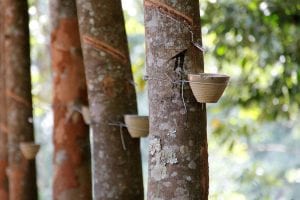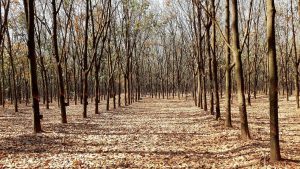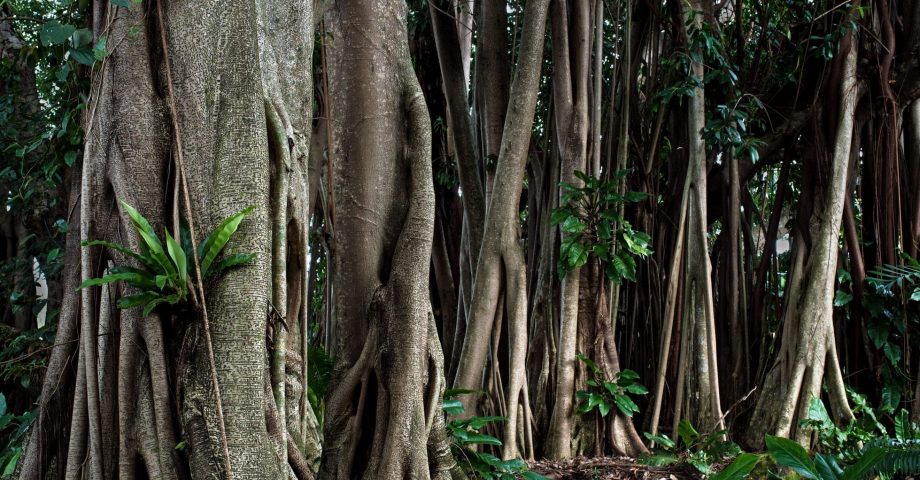Rubber trees are native to the rain forests of the Amazon region of South America. They’re also found in low altitudes in wetlands such as Sri Lanka, China, Liberia and India, with a significant part of the world’s rubber coming from these trees.
Here are some more interesting facts about rubber trees!
1. What’s the rubber tree known as in Latin?
Hevea brasilienis is the botanical name of the rubber tree.
2. They grow to be seriously massive.
Also known as the rubber fig tree or the rubberwood tree, the rubber tree plant can grow to over 100 feet tall in the wild.
3. They are very oddly shaped.
The tree has a cylindrical truck which is typically swollen towards the base.

4. They need room to thrive.
Due to their large and powerful roots, rubber trees do not typically do well in close proximity to homes and sidewalks.
5. They can grow in many climates.
Although the rubber trees are most suited for hot and wet climates in the tropical rainforest, they can also survive in extremely dry conditions.
6. Rubber tree leaves are really strange.
The leaves of the rubber tree are typically spiral-shaped. The flowers are small and consist of no petals. Sudden temperature drops can cause the leaves to drop.
7. You won’t cause damage by taking up the latex.
Harvesting latex from these trees does not cause harm to them.
8. However, latex harvesting takes time.
The latex can only be tapped from rubber trees after six years of growth. A cut is made (typically thin) on the trunk of the tree and the silver bark is then removed.
9. Rubber tapping has been taking place for centuries.
Found in Central and South America, the Mesoamerican people (such as the Aztecs and the Mayans) were the first to tap rubber from these trees. They made play balls from the latex they collected (after letting it dry). Latex was also used to waterproof their clothing.

10. Some rubber trees run dry.
Although rubber trees produce latex as long as they live, the amount of production may decrease with age.
11. There’s a hit song about rubber trees.
In 1961, a song known as High Hopes (a song about rubber trees) by Frank Sinatra reached the Billboard top 100. After Sinatra’s initial song debut, several versions of the song have been performed.
12. Some rubber trees are stunted.
As they are often tapped for latex, the Rubber Trees that are grown in plantations only grow up to 25 metres.

13. The smell isn’t pleasant.
The leaves of these rubber trees are typically cream to yellow in colour and contain a pungent smell. The male and female flowers are located in the same tree.
14. Better duck!
The fruit of the rubber tree explodes which releases and spreads the seeds as far as 30 metres away.
FAQs about Rubber Plants
How many types of rubber tree are there?
There are thought to be more than 2,500 different types of tree that produce latex!
Are rubber trees poisonous?
Yes - they are toxic! Be sure to avoid licking any!
Are rubber trees actually rubber?
Believe it or not, rubber trees can produce latex that’s around 30% rubber.
Do you know any interesting or fun facts about rubber trees? Share them in the comments below!











Comments are closed.